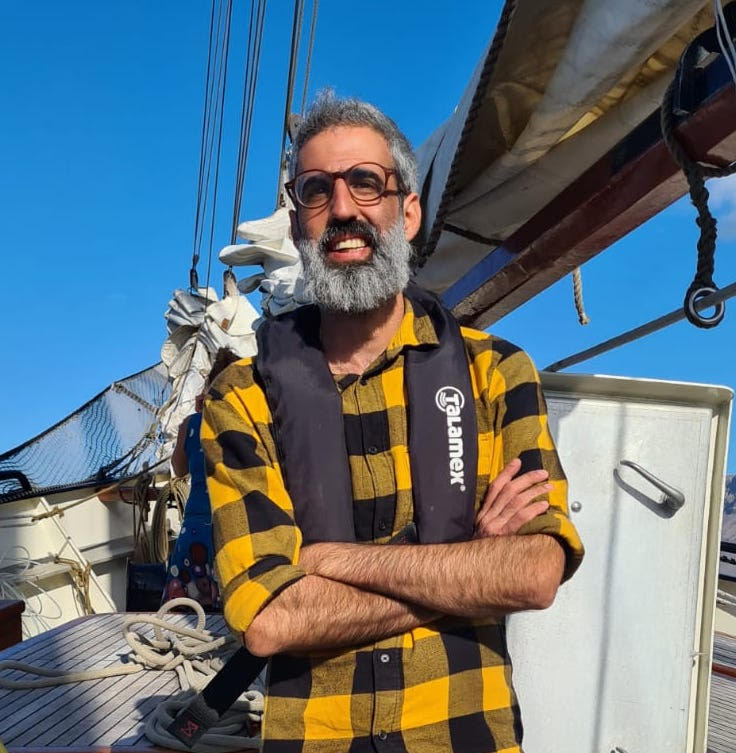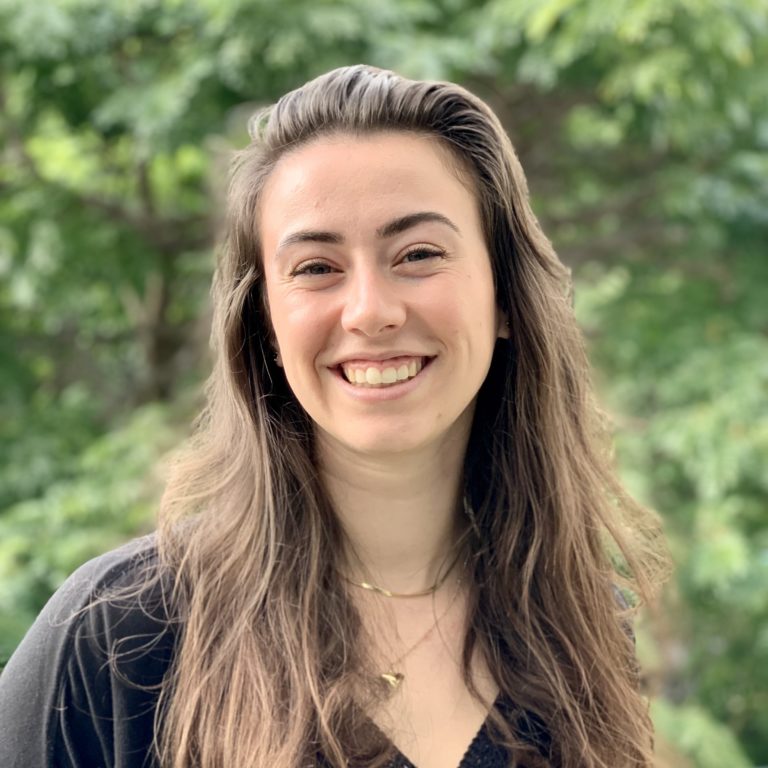Lights, camera…collaboration!
Every summer at MARE-Madeira, we participate in GAME (Global Approach by Modular Experiments) and host students from around the world who are taking part in this great program. Organized by GEOMAR in Kiel, Germany, GAME offers young researchers an incredible opportunity to gain experience in research and improve global collaboration in marine science. This summer, we welcomed Elisa and Laura to the team. Read their interview to learn more about the GAME program, this year’s experiment on light pollution and why benthic sea critters are cool!

Let’s start with an introduction. Who are you(!) and how did you end up here?
Elisa: My name’s Elisa and I’m from Germany. I’m doing my Master’s and was looking for a place to go abroad and do my Master’s thesis. I came across GAME, which is a collaboration between different institutions around the globe and it sounded very exciting, especially with its focus on human impacts on the ocean. It was an opportunity to go abroad, be part of an international team and do something I’m really interested in. And going through all the partner institutions, I saw MARE-Madeira and as Madeira sounded so beautiful, it was my top choice.
Laura: I’m Laura and I’m Italian. I’ve been living in Madeira for more than a year already. I came to Madeira after my Master’s in Environmental Biology to do an internship at MARE-Madeira. I really wanted to stay and João told me about the GAME program, as a way to potentially do so. It sounded really interesting, the global approach to research, so I decided to apply.
Who can take part in GAME?
Elisa: Anyone in a Master’s program that is connected to biology can apply. It can also be considered as an internship, so if you want to do it after your Master’s you can do that as well. They also want students from around the world to have as diverse a group as possible.
How collaborative is the program?
Elisa and Laura: There are lots of different institutions from different countries around the world who take part – in Japan, Chile, Cabo Verde, Iceland, Croatia, Finland… Every year it varies a bit which countries participate. But it’s very collaborative, because we’re all doing the same experiment, just in different locations. So, we started altogether in Kiel to learn about the experimental set-up, then we all went off to our different locations for the summer. Now we’re about to come back together for another 3 months to compare results.

Quinta do Lorde harbor. Photo credit: Laura Piazzese
What was this year’s experiment?
Laura: It’s about artificial light pollution during the night. We want to see how this affects the formation of fouling communities, which consist of all the species that stay attached to a substrate – these are called sessile benthic species. Because they can’t escape the light, we want to see how it affects their settlement behavior, growth and the succession on the panels.
Elisa: In the experiment we used white and yellow light, so that the effects would be comparable to the light pollution that already exists – from street lights, for example. This human impact is becoming more relevant as coastal areas become more populated and more polluted with light.

Funchal harbor at night. Photo credit: Diane Esson
What was the experimental set-up?
Elisa: We went to Quinta do Lorde because it’s a very quiet harbor that doesn’t have much light pollution. That was good for us because we need to have a control group, and in our case, these were settlement panels that were exposed to more or less naturally dark nights. To do the experiment, we attached PVC panels to a frame and suspended them below pontoons. Then we applied either white or yellow light using LEDs that were placed underneath the pontoons, directed at the panels. We used a light intensity comparable to street lights that shine on the water. We let the experiment run for 3 months and checked regularly for colonization, growth and the course of succession.
What did you see?
Laura: Every month we were sampling, so we’ve done 3 sampling campaigns and saw a difference month by month. There was a clear difference in species richness and abundance, but we still need to do the data analysis, so we can’t quantify this yet.

How do you compare the control groups around the world?
Elisa: We all have to do site characterizations. In our case, we took photos at night and described the water and tide conditions. This is important so that we can have alternative explanations for the differences in results that we’ll see across GAME sites. We also have a lux meter. In our case, the habor was really dark and we can more or less say that our control settlement panels got zero lux.
Has work been done in this area of research before?
Elisa and Laura: In terrestrial habitats, yes, light pollution has been studied pretty well. But in underwater fouling communities, or light pollution in the ocean in general – no, it hasn’t been explored very much.
What’s the next step in the program?
Elisa: Now we go back to Kiel. Everyone comes back and we’ll do data analysis for 3 months and do workshops on scientific writing. GAME is designed to get you ready for future research careers – whether in a PhD or other areas of research.

What’s next for you individually?
Laura: I’m planning to stay in Madeira more and would like to continue my work. I’m not sure if I want to do a PhD – I want to take more time to decide. But I’m discussing with João possible next steps.
Why do you like Madeira?
Laura: It feels like home here. I like the weather and I really like ‘Who is Laura’ in Madeira.
Elisa: I also like Madeira and am considering coming back after I finish my Master’s. I’ve been looking for jobs and am in contact with a whale watching company that does guided tours. I think it could be a nice way to combine living here and being connected to the ocean, and still being connected to research. The whale watching companies here help gather data and do photo identification, working with researchers here. I like the idea of helping research while also spreading the general fascination of the ocean to others.
What’s your favorite memory from this project?
Laura: The construction of the structures was very funny. We had a lot of help from Patrício, and then it was just me and Elisa trying to glue things and drill things together and we made a lot of mistakes.
Elisa: That was really funny. I also loved looking at the panels under the stereomicroscope and seeing all these alien creatures. For me it’s always fascinating. You have a tiny plate and on it there’s an entire cosmos – a whole world to explore! And these creatures are the foundation of all sea life as well. That’s pretty cool.

I love the sea squirts. I love that they’ll just getcha. They look totally benign – and then, suddenly, you’ve got salt water in the eye.
Elisa: Yes! They don’t have eyes, but sometimes you have to wonder – Do you really have no eyes? Because that was a really targeted attack!
Any final thoughts?
Laura: I really love MARE-Madeira. This is also why I am so motivated to stay somehow. I will catch whatever opportunity I can. It’s a good environment and people want to help you. There is a connection between the different teams and research projects. It’s a nice connection and I feel that it’s right.



